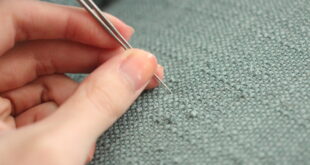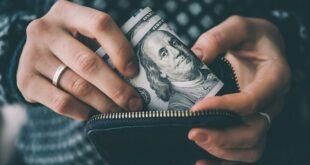
Over the weekend, while we were in Lille, we took a tour of the Winckelmans tile factory. The tour was actually the primary reason for our visit to Lille. We’re using Winckelmans tile for the bathrooms in our renovation — I’ve never ordered custom tiles before and wanted to see what the process was like.
And honestly I was blown away. The materials, the handwork, the science, the quality, the history. The whole thing is such an art and a skill. And getting to see the bags of colored sand turned into basically indestructible tile right before our eyes was such a cool thing.
I’m going to take you through our tour and tell you everything I remember. I took a ton of photos, so it will be a visual tour too.





First, we gathered in this conference room to learn a little bit about the history of Winckelmans. It doesn’t sound like a very French name, right? The original founder was actually Dutch, but founded the company in Lille in 1894. It’s still run by the same Winckelmans family — now five generations later!
It’s currently run by Barbara Winckelmans. Her great-great grandfather was the original Winckelmans. Then his son ran it. Then his son. Then his son. And then his daughter, Barbara. This was unexpected. Barbara had an established career as a nurse, but her father got sick, and knew he was going to die, and asked Barbara to take over the family business. So she did. And she’s improved the company in incredible ways.

A few key things I remember about the history of Winckelmans:
-Early in the 1900s, there were quite a few tile factories in France, and they all made basically the same thing: matte ceramic tiles with straight edges in small shapes, no gloss. As things started to modernize, these factories essentially all converted to new trends — much bigger tiles, with high gloss finishes.
But Winckelmans resisted. They made the conscious decision not to follow the new trends. They decided they would continue to only make small matte tiles. And they are the only factory in France who still does!

-During WWII, the British actually bombed Winckelmans by accident. The factory has train tracks (see below) that used to bring in the raw materials, and the British military thought the train tracks were a train station (one of their targets).

Almost the entire factory was destroyed. But, one kiln survived, and one of the original three chimneys survived.

Some of the original panels of tile near the entrance also survived. They are so cool:




Since the war, the entire factory has been rebuilt:

-Winckelmans supplies tile all over the world, including the U.S., for new projects and for restoration projects. If you have small matte, straight-edge tiles in your building, home, restaurant, or school, or have ordered tiles for restoration, it’s pretty much guaranteed they came from Winckelmans.
Though some of the processes have modernized, the tiles are made in the same way and in the same colors as they have been for over a century. It’s amazing.

-Winckelmans creates tile for all the Hermés stores. There’s a particular pattern of small square tiles just for Hermés, and they change the color of the pattern for each individual store. In addition to the small squares, Hermés also has a custom cut-tile logo installed.

It takes weeks to build one of these cut-tile logos! Each tiny piece is cut by hand. Someday, I want to have a cut-tile installation that says “Famille Blair depuis 1995” for the entry of our house — like a fancy hotel!

-When Barbara took over Winckelmans, much of her first projects were based on the workers’ quality of life. She added natural light to all the factory spaces. She brought in insulation panels to absorb sound from the big machines to protect workers’ hearing. She invested in huge filters that keep the air clean and breathable in the factory buildings.

Wherever possible, she converted the processes so that machines were doing the physical (heavy!) lifting of tile instead of humans, to prevent back injuries. She modernized the whole thing, making the work safer and healthier, without changing the integrity of the process or product. (I love woman leaders!)
-The tiles are completely made from natural materials, and in every tile they make, the colors go all way the through. Nothing is “printed” on. They start with raw materials and compress those materials into tile molds, which are then baked.

Even on the complicated designs it’s the same thing. It’s all compressed natural materials that are baked into a super hard surface. See the closeup of the tile above? Notice that edges of the design are not precise? That’s because the design is built from sand and it goes all the way through!
Side note: Speaking of the tile above, you may know that cement tiles are a huge trend at the moment. (And no wonder, they are so charming!) But cement tiles will degrade with moisture and are not safe for exteriors or for shower floors. Plus, they are inconsistently made so it’s hard to install them straight. If you’ve ever worked with them, you know they can be very frustrating. But these Winckelmans tiles — even the ones that looks like cement tiles — are completely water proof, incredibly strong, and super consistent. They are a dream to work with.



-Within the factory, there’s a workshop that’s just for maintaining the factory. They build every factory door, every machine part that’s needed. They can replicate tiny parts that are no longer available, and custom create solutions just for the factory. They also maintain and repair all the existing machinery.

After the history briefing we started the factory tour. We began where the tiles begin — with giant bags of raw materials. The bags are filled with special mixes of sand in different colors. (The materials for the sand are combined at another Winckelmans factory a couple of hours away.)

The materials for the sand are all natural and made from things like cobalt and red clay.

There are three different grain sizes of the sand. For solid colors, it’s a medium size grain.

For speckled tiles, it’s a combination of course grains, and powdered grains.




The sand is hauled around the factory in these rolling carts. (They are so charming! I think someone needs to make a replication of these and sell them as laundry carts.)


The sand is put through a machine that compresses it into these blocks:

Then they are ready to be placed into molds.


For the solid color tiles, the molds look like this:

Squares, triangles, hexagons, circles. Most shapes are very tiny.


The molds are crazy expensive to make (about 30,000 euros!) and can last for 30+ years if they’re well taken care of. Here is the library of molds:

For tiles with a design (not solid colors), there are a couple of different options. There’s a machine that will carve out a block of steel with a design or pattern:



And there are also 3D printers that can create a custom mold. The 3D printed molds don’t last as long, but are much less expensive to create.


So if you’ve always wanted a tile with your logo, or your family initial or crest, they can create a tile mold just for you:

Next, the blocks of sand are compressed much further into the tile molds, and what comes out is unbaked tile. (Fun fact: certain machines are dedicated to red colors so the red residue doesn’t tint other colors. Just like with laundry.)


At this stage you could break the tile with your hands, and the tiles still have moisture in them, so they have a little bit of a sheen.
If there are any flawed tiles at this point, they can be returned to sand and reused. So there is no waste.

From here, the tiles go through a two hour baking process. It’s a long ride on a conveyor belt through that green machine that extends the whole length of the factory.


They become so hard during the baking process they are known as one of the hardest materials on earth. And all the moisture and sheen disappear so they are completely flat and matte.




Next, the tiles might be stacked and boxed if they are one of the larger sizes. But if there’s a pattern of tiny tiles for a wall or floor area, they’ll be put on a mesh backing. (That way, the tile installer doesn’t have to install tiny individual tiles, instead they can install mesh sheets of tile that are about 12″ x 12″.
There’s a ton of skilled handwork involved in making the mesh sheets and it’s incredibly impressive to watch.
Winckelmans recently update their logo and packaging. Here’s the handsome new black and white box with the new logo:

Something fun: At this point in the tour we got to see some of our tiles!! This is the design I came up with, featuring small hexagons in 4 colors. It was amazing to see it coming to life.


And those hexagon patterns? Those are all assembled by hand!!

Throughout the process there are quality checks at every point. This bin is full of baked, discarded tiles that have tiny flaws. Mostly I could not spot the flaws — the flaws are so tiny you would need a trained eye to spot them.
All of these baked tiles are broken into smaller pieces and reused in a terrazzo-style flooring that Winckelmans offers — so again, nothing goes to waste.

The science behind all of it is incredible. All of the raw materials shrink at different rates when they are baked. Both the materials and the degree of heat can create different shrinking effects. But all the finished tiles need to be the same size and shape, so each tile “recipe” needs to take into account the raw materials, the size of the original mold, and the amount of heat. A finished red tile and finished blue tile will look the same size and thickness, but the recipe for each will require different heat, different molds, etc. in order to achieve that identical finished size.

Winckelmans has been doing this for so long and has the science so perfected now, that the tiles are correct and perfect 99.5% of the time. There are so few that need to be discarded they don’t actually have enough for their terrazzo flooring and sometimes have to break up perfectly good tiles if they need more tile bits. Hah!
If you want to order samples for color, this is where that happens:

These shelves have all the Winckemans color options, and they’ll fill a box with your sample requests and send it out.

Though it’s a French company, they do a ton of work in English speaking countries — especially Australia and the U.S.. (One of their specialties is Victorian tile restoration.) So don’t be intimidated to reach out if you’d like to work with them.
They actually have several partners throughout the U.S. who can take you through the design process and help you place your order. There are so many options, it can feel overwhelming, and it’s really helpful to have someone take you through the process.


Take a look at the Winckelmans catalog to get a sense of what you can dream up— the potential combination of circles, triangles, squares, rectangles, hexagons, and octagons, make for endless design options, both modern and traditional.
If you want to start designing and aren’t sure where to start, I recommend finding a tile photo you like from the catalog, and then adapt or expand the design from there. And the Winckelmans design partners will take you through all the options for specialty tile pieces (like for corners or edges) if your design needs them.


Of course it’s fun to go to a showroom and see the tiles in person, but if you can’t get to a show room, you can still totally order online. That’s what we did. I came up with our design and placed the order before I’d ever seen the tiles in person.
Prices for standard brick tiles seem pretty competitive to me (based on other tile research we’ve done) and could be ready to ship quite quickly — many of the most in-demand sizes and colors are “in stock”.
But for a custom order, like our hexagons for the bathroom floors, plan on more time — 6 to 8 weeks (or more) depending on the complexity. But that shouldn’t shock you when you realize they are literally starting with bags of sand and then delivering exactly what you dreamed up, ready to install on mesh sheets. It’s remarkable.

So that’s the end of the tour. But! Right next to Winckelmans, was another small factory (also 5th generation!) that produces faucets (called Herbeau), and we got to tour it too. So I’ll tell you about that later.
I’m so glad we got to make this visit. I had been searching for months for tile that was produced in France and felt really French — tile that would fit right in on the floor of a Paris café. A couple of French Instagram followers recommended Winckelmans and I’m so glad they did. As soon as I got to their website it was like: That’s it! That’s the tile I see all over France!
Your turn. Do you enjoy factory tours? Have you ever taken one that stands out in your memory? Does a custom tile project appeal to you? Or do the options feel overwhelming? Are there any old buildings in your town that have tiny matte tiles? (I’m betting they were made in Lille at the Winckelmans factory!)
P.S. — Do you remember watching the factory tours that were sometimes featured on Mr. Rogers? They were always my favorite. I LOVE factory tours.



